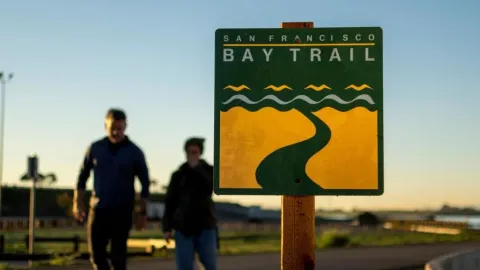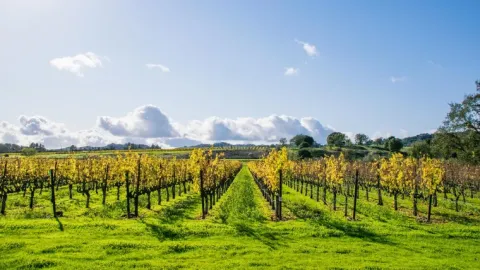
The San Francisco Bay Restoration Authority — co-staffed by the San Francisco Estuary Partnership and the State Coastal Conservancy — has helped secure the acquisition of a 1,150-acre site for tidal wetland restoration in the North Bay as part of the Sonoma Creek Baylands ecosystem.
Known as Camp 4, the parcel sits between the San Pablo Bay National Wildlife Refuge and the Napa-Sonoma Marshes Wildlife Area and is encircled by seven miles of tidal slough channels. The property will be restored to tidal marsh wetlands after a century of agricultural use, most recently as an organic hay farm.
It will act as a critical defense area against rising sea levels in the San Francisco Bay Area and provide habitat for the salt marsh harvest mouse and Ridgway's Rail.
“Camp 4 Ranch is the first acquisition to be funded by the revenue generated from Measure AA, the Bay Area’s regional shoreline restoration measure,” said Amy Hutzel, San Francisco Bay Restoration Authority Executive Officer. “(The) acquisition of over one thousand acres of diked former baylands reflects the important role of local funding."
The San Francisco Bay Restoration Authority granted Measure AA funding to Sonoma Land Trust to develop the Sonoma Creek Baylands Strategy in 2018, which identified Camp 4 as one of the most significant remaining opportunities for tidal wetland restoration.
The Restoration Authority worked in partnership with the Sonoma Land Trust, the Natural Resources Conservation Service, and the Gordon and Betty Moore Foundation on securing the land as part of a long-term federal and regional commitment to preserving and restoring natural landscapes of the Bay Area.
The partnership will continue to collaborate to design and implement a comprehensive tidal marsh restoration plan, with the Land Trust taking on stewardship responsibilities until a suitable partner agency assumes ownership.
Since the 1980s, large properties in Marin, Napa, Solano, and Sonoma counties along the San Pablo Bay have undergone key phases of restoration, including intentional levee breaches that converted dry areas into moisture-rich landscapes. Returning water back to the land is the first step in the transformation process and provides the foundation for life-sustaining wetland ecosystems to return as they were prior to the mid 19th century.
It was around 1850 when Sen. John P. Jones acquired 15,000 acres of Sonoma Valley’s tidelands and drained them for agricultural use. Jones set up six "camps" with bunkhouses to accommodate the workers on his ranch. Hay was the most popular crop and was exported to San Francisco to fuel the horse-drawn carriages of that era.
Hosted by the Association of Bay Area Governments, the San Francisco Estuary Partnership is a collaboration of local, state and federal agencies; non-governmental organizations; and academic and business leaders working to protect and restore the San Francisco Bay-Delta Estuary.



Submit your comment
In order to receive a reply to your comment, please provide an email address.